Consular Legends

1. Introduction
We’ve discussed the warriors and the infiltrators of the Jedi Order, so now it is time to talk about the diplomats. Yoda, Odan-Urr, and Qui-Gon Jinn are three of the more famous members of the Consular Order, but what made them Consulars? How are they different from the other Jedi Orders? This course will familiarize you with what the Consulars do and how they do it. You will learn the order’s background and their impact on the Galaxy, as well as what paths a Jedi Consular may choose to walk.
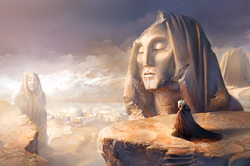
Jedi Consulars, unlike the Guardians and the Sentinels, both of whom you may have already learned about, are scholars, researchers, teachers and diplomats. However, despite the fact that Jedi Consulars, like every other Jedi, are proficient in the arts of both combat and survival, a Consular will seek diplomatic resolutions to problems, no matter how tough the situation.
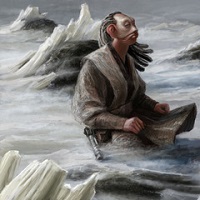
Throughout all of the different suborders of the Jedi, it is a well known fact that the Consulars are the wisest of Force users. They dedicate their lives to studying the Force and imparting the acquired knowledge of their studies to young Padawans and those Jedi who wish to learn from them. Also, due to their meditative approach to the Force, Consulars make excellent diplomats, being famous for many historical diplomatic interventions which have solved many conflicts all across the Galaxy. If seen on a battlefield at all, they are usually there to tend to the wounded using the Force as a way to heal.
Taking all of this into consideration, it is logical to assume that the Jedi Consulars play a supportive role among the Jedi, mostly staying away from direct confrontations and giving advice and guidance to Guardians and Sentinels. An example of this was the advice Nomi Sunrider gave Ulic Qel-Droma.
2. History of the Consular Order

The Consular Order was not officially established until approximately 4,000 BBY; however, there is evidence that the idea of Consulars had originated from the beginning of the first Jedi Order or even from the discovery of the Force.
Pay careful attention to this section, as the history of the Consular Order and the Jedi in general becomes more and more blurred the further you look into the past. Rather than taking the information presented in the first part of this section as facts set in stone, consider viewing it more like a collected series of events designed to equip you with the knowledge to form your own opinions and theories.
2.1 The Universe at large
Historically, the origins of the Consulars can be tracked as far back as 37,453 BBY, with the arrival of the first mysterious artifacts known as Tho'Yor. A group of Force sensitives known as the Dai Bendu monks began to meditate around the peculiar object until 36,453 BBY, when the artifact, along with eight other similar objects that were spread around the Galaxy, opened itself. Using the Force, the Tho'Yor called out to the Dai Bendu monks and the various other Force sensitive groups that had been meditating around them all across the Galaxy. Rising from its planetary surface, the artifact launched itself into outer space towards a planet in the Deep Core we know as Tython. The Tho'Yor had collected Force sensitives from hundreds of different species in the starship artifacts and spread them out across Tython. The Tho’Yor artifacts were then used to create nine new temples, forming the foundation for what would become known as the Je'daai.
Force-sensitive beings of all species, brought together on Tython by the mysterious Tho’Yor and compelled by this prophetic event, started studying the power behind these artifacts. These proto-Consulars, researchers of the Force, divided it into two parts, named after the moons of Tython: Ashla, the Light Side, and Bogan, the Dark Side. Together, they created temples of learning and study around each of the Tho’Yor and formed an organization known as the Je’daai.
The Je’daai were not inclined towards the Light or Dark Side of the Force, but tried to keep a balance between both sides. Those attracted to the Dark Side were banished to Bogan, the dark moon of Tython. However, over time, the number of Je’daai who were attracted to the Dark Side increased. This shift eventually led to a civil war where those who followed the Dark Side lost and were exiled from Tython. The followers of the Light Side renamed themselves the Jedi Order.
Still not organized into different orders, the proto-Consulars established many academies to train those who were Force-sensitive as future Jedi. The Jedi Order would remain undisturbed and mostly unnoticed outside their space until 25,053 BBY, when the Galactic Republic was formed. After one hundred years, the proto-Consulars approached the Republic as ambassadors of the Jedi Order and swore loyalty to the new government as their protectors and guardians. The Jedi Order developed greatly in this period and even established a Jedi Academy on Ossus.
Over the next 20,000 years, the Republic and the Jedi Order went through long periods of peace and some minor conflicts as they expanded through the Core Worlds and part of the Outer Rim territories. Many Jedi academies were created, and the Consulars served as advisors and ambassadors of the Republic in its times of need.
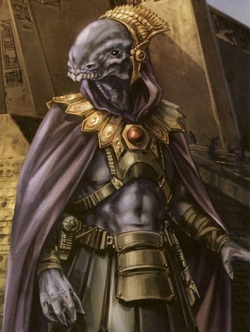
The first major conflict that the Republic suffered started in 5,000 BBY, when the siblings Gav and Jori Daragon encountered the Sith Empire while scouting for new hyperspace routes; this was an interstellar empire ruled by the descendants of those users of the Dark Side that were expelled from Tython thousands of years ago. During this conflict, known as the Great Hyperspace War, two Jedi Consulars, Master Ooroo and his student Odan-Urr, played major roles that would have a direct impact on the war's result.
Odan-Urr was able to see the coming conflict and tried to warn the Republic of the coming war, but he was too late to get the Republic on guard, and the Sith Empire took the Republic by surprise, gaining the upper hand in the first battles.
Master Ooroo, a Celegian scholar, sacrificed himself during one of the battles in the Great Sith War, destroying the capsule that contained the chemicals needed for his survival and destroying many Massassi warriors while Odan-Urr - using the Force power known as Battle Meditation - coordinated the Republic defenses and managed to put an end to the conflict on their planet. Defeated on other fronts as well, Naga Sadow, leader of the Sith Empire during the war, had no other choice but to retreat to Sith Space.
Following the Great Hyperspace War, Odan-Urr established the Great Jedi Library on Ossus. This was one of the most notable buildings in the history of the Jedi Order, and it served as a center of knowledge and training for all Jedi for a millennium.
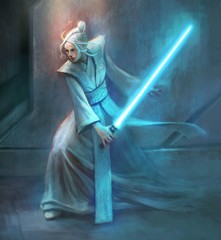
According to the legends, in 4,019 BBY, two Warrior Masters and two Sage Masters established the ziggurat known as the Jedi Temple on the Force Nexus of Coruscant. It was in this period that the Jedi Order established the titles of Guardian, Sentinel and Consular. In those times, and after the death of Odan-Urr, the most prominent Consulars were the Jedi Master Nomi Sunrider and the Chief Librarian Atris, who both became part of the Jedi Council.
During the Jedi Civil War, a Sentinel called Bastila Shan became famous and a deciding factor in the conflict because of her mastery over the Battle Meditation power. Due to this, many mistake her for being a Consular. Three centuries later, Bastila’s descendant Satele Shan became the most famous Consular of her time, rediscovering Tython and becoming Grand Master of the Jedi Order.
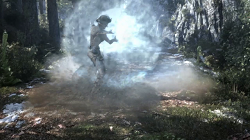
As the Great Galactic War ended with the Treaty of Coruscant, another famous Consular, known as the Barsen’thor, saved the entire Jedi Order from a plague created by a Sith, Lord Vivicar. The Barsen’thor rediscovered a shielding power that he used to protect those affected by the plague. He eventually tracked and defeated the Sith Lord. He also managed to create the Rift Alliance, uniting Outer Rim forces against the Sith Empire threat, and dismantled a group of corrupted Dark Side adepts within the Republic known as the Children of the Emperor. After all these feats, the Barsen’thor was granted a seat on the Jedi Council.
Following this was the Galactic Cold War. The Galactic Cold War was a period of silence where very few Consulars of note were present. Two exceptions to this were the Consular Jedi Master Worror Dowmat and the chief librarian Barra-Rona-Ban, both during the period of the New Sith Wars. After the Sith Wars, another notable Consular was the Grand Master Fae Coven.
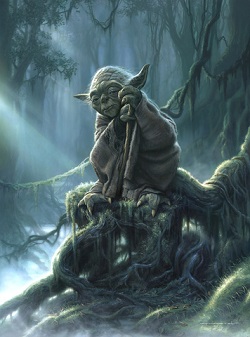
A millennia later, during the era known as the Fall of the Republic, which saw the once great and noble Republic degenerate into corruption and inaction, appeared the most famous Jedi Consular in the Galactic History, Grand Master Yoda, and with him the Jedi Consulars Luminara Unduli, Kit Fisto, Shaak Ti and Barris Offee. Only Grand Master Yoda would survive long enough to keep the Jedi alive, teaching the son of Anakin Skywalker the ways of the Force. Skywalker would then go on to destroy the Emperor and restore the Jedi Order under the banner of the New Republic.
2.2 Inside the Brotherhood
The history of the Consular Order within the Brotherhood is intertwined with that of the other Orders, considering that they were restored together as one Jedi Order following their settling on the planet Harakoa (renamed shortly after their arrival as New Tython).

The Jedi arrived on Harakoa after the planet was colonized by escaping emigrants from the Galactic Empire. They found the planet in conflict as the Harakoans, the original natives of the planet, were attacked by the expanding colonists, and the Harakoans were answering in the same manner. Battles escalated as the future Consulars tried to contact both species and come to a peaceful agreement between them.
In an attempt to restore the peace, the Consulars noticed the futile attempts of New Tython’s government in creating the Colonial Guaranteed Protection Committee in 20 ABY. The Consulars' efforts paid off in 27 ABY, resulting in the creation of the Friendship Committee to replace it, ending the existing favoritism towards the New Tythonians. The place where this truce was made would later become the capital of New Tython, Menat Ombo.
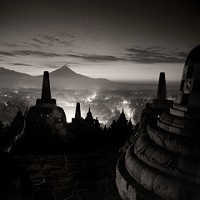
Even with these efforts, the New Tythonians continued twisting the laws towards their favor, and the conflict between them and the Harakoans still persists in the present.
It was in 28 ABY when the Jedi made contact with the Brotherhood. Aware that they were not able to compete with the Brotherhood's military might, the Consulars contacted the Dark Council. To their surprise, they were permitted to live in peace by the Grand Master Muz Ashen as long as they joined the organization. As part of the agreement, they would change their name from Acolytes of Odan-Urr to House Odan-Urr, and New Tython would be recognized as part of the Brotherhood dominion.
Suspicious but without any choice, House Odan-Urr's Consulars agreed to these terms, but the seers within the Order failed to foresee the Brotherhood's sudden attack in 29 ABY. While Guardians and Sentinels tried to protect the Jedi and the population, the Consulars managed to establish an alliance with Jedi Master Michael Halcyon and the mandalorian forces of Clan Ordo. The war ended in a stalemate, with the city of Menat Ombo reduced to a pile of dust and the forces of the Brotherhood retreating as swiftly as they had attacked.
3. Past Consular Leaders
Ji, founder and first Quaestor of House Odan-Urr, restored the ancient Consular Order, as well as the Guardian and Sentinel Orders.
Solari, Aedile under Ji when the Acolytes of Odan-Urr were first brought into the Dark Brotherhood.
Liam Torun, last Quaestor of House Odan-Urr, former BTL of Strike Team Ooroo, Disciples of Baas, and the Knights of Allusis.
A’lora Kituri, first Consul of Clan Odan-Urr.
4. Consular Specifics

When a Jedi decides to join the Consular Order, many paths are open to them. Will they follow the ambassador’s path, dealing with diplomatic conflicts? Or will they become seers, spending their time meditating to observe the fluctuations in the Force in an attempt to predict the future of the Jedi in general? The different paths that a Jedi Consular can follow are explained in this section.
4.1 Jedi Seer
Within the ranks of the Consular Order, there are those who are more connected to the Force and who attune themselves to the higher workings of the Unifying Force. These Jedi can hear the voice and feel the will of the Force.
Jedi Seers can view events from remote distances and receive visions from the past and the future. In the past, these visions were recorded in holocrons for the use of the Jedi Order. Seers are considered one of the most important assets of the Jedi, as they can perceive the entirety of existence.
4.2 Jedi Healer
Jedi Healers are on the opposite side of the Seers, attuning themselves with the Living Force. Using their powers to save the lives of the dying and cure the infected, these Jedi travel to those worlds in need of their skills and are often seen assuming command of medical units, coordinating their efforts to save the lives of the wounded.
Healers are in charge of administering the medical facilities of the Jedi Order and sometimes move to other planets to practice their curative trade and improve their skills.
4.3 Jedi Researcher
Jedi Researchers are specialists who employ their exceptional minds to solve theoretical problems and improve the quality of the data that the Jedi Order preserves. Specialists include in their ranks mathematicians, hyperspatial physicists, astronomers, biologists and many others.
4.4 Jedi Ambassador
Whereas the Guardians do battle on the frontlines, and the Sentinels do battle within the shadows, the Jedi Consulars avoid a fight if they can help it. Nowhere is this more apparent than in those specialized as Ambassadors.
The Jedi have learned and adapted the principles of justice from ancient Caamasi philosophers, as they are known for their impartiality. The Ambassadors are sent wherever tensions arise, trying to prevent an escalation of conflicts and find a peaceful and just solution for all involved parties.
4.5 Lore Keepers
Lore Keepers are members of the Consular Order that can be divided into three different specialties: the historians, the librarians and the archivists.
While historians specialize in the study of prior eras, librarians make sure that the knowledge kept by the Order is accessible to all Jedi. Archivists take documents brought by other Jedi and translate, copy and store this knowledge for the Order's future use.
5. Conclusion
Now that this course has come to an end, you should have a good idea of what the Consular Order is and the different duties and responsibilities of their members, as well as a basic knowledge of the history of the Consulars and the creation of the Order within the Brotherhood.
Not everything that a Consular could or will learn is written in this course, as the search for knowledge by the members of this Order is a task that will not end until the end of their lives. With the power of the Force in their hands, Consulars will travel across the Galaxy, fulfilling their duties as scholars and ambassadors of the Jedi, learning from their surroundings and the situations they will encounter.
Remember that a Consular, though not as trained in the art of combat as the Guardians or in stealth and subterfuge as the Sentinels, are very capable of defending themselves against any threat, but do not forget that any member of the Consular order will be expected to have enough wisdom to know when the action of the other Orders will be required to solve a problem.
In closing, a statement from one of the most famous Consulars that ever existed:
“For my ally is the Force,
and a powerful ally it is.
Life creates it, makes it grow.
Its energy surrounds us and binds us.
Luminous beings are we,
not this crude matter.
You must feel the Force around you.”
- Master Yoda
Please log in to take this course's exam